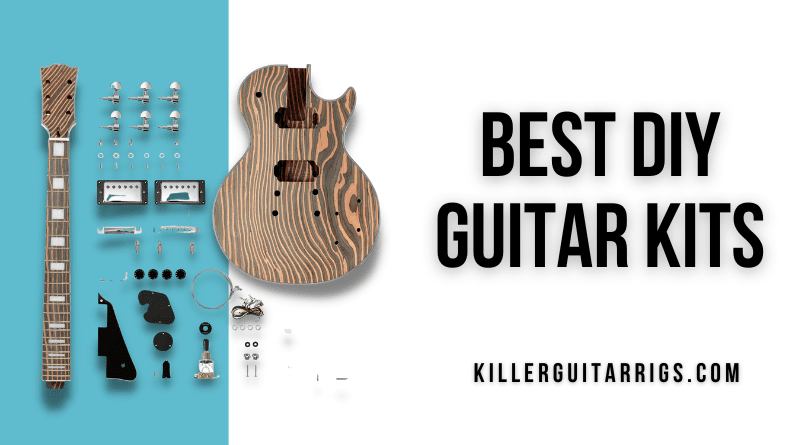While most players are perfectly content playing guitars bought from a retailer in a fully-assembled condition, some like to take their customization to the next level by building their own guitars from scratch. Unfortunately, lutherie tools and materials can be incredibly expensive, and the skills required to take on such a build can take years to master.
Fortunately, there are now a number of DIY guitar kits available, where the hardest parts like body construction, fret setting, and neck carving are already taken care of. You’ll still get the satisfaction of building your own guitar, but without the need to invest thousands in hardware and materials, not to mention the time taken to learn the lutherie skills.
In this KillerGuitarRigs Review, we’ve put together 7 of the Best DIY Guitar Kits on the market today. When reviewing each kit, we looked at what was included in the kit, the build process, and the tone and playability after completion. If you’ve been curious about building your own guitar from a DIY kit, you’re definitely going to want to keep on reading.
Read more about our review process.
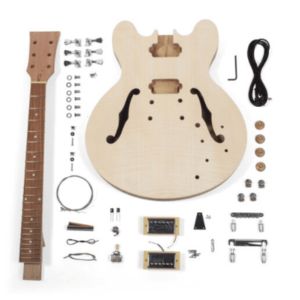
StewMac Build Your Own DIY 335-Style Electric Guitar Kit
Features: Pre-routed, Flamed maple top, Set neck
Benefits: Challenging build, Quality components, Great playability

Bad Cat Instruments DIY Electric Guitar Kit LP Style
Features: Zebrawood top, Gold hardware, Block inlay
Benefits: Unique looks, Great tuning stability, Huge tone
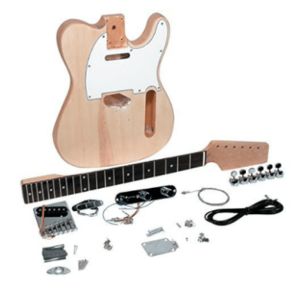
Saga TC-10 kit
Features: Single coil pickups, Solid mahogany body, No-solder electronics
Benefits: Easy to build, Lots of customization options, Classic Tele tone
Contents
Our Top 3
If you’re looking to strike a middle ground between quality and price, we were really impressed by our Top Pick, the Bad Cat Instruments LP Style Kit. It looks stunning, it comes with some great components, and the parts were well-finished.
Those players looking to spend as little as possible should check out our Best Value option, the Saga TC-10 kit. This is a Tele-style guitar kit and makes a very appealing option for first-time builders, because of the price and ease of construction.
Finally, those not constrained by budget and who are simply looking for the best kit around will want to check out our Editor’s Choice, the StewMac 335-Style kit. It comes from one of the most recognized names in the lutherie industry and offers unparalleled quality.
Individual Reviews

Bad Cat Instruments LP Style Kit
Easily one of the prettiest DIY guitar kits available today.
This kit offers a great way for players to get their hands on a truly exotic looking Les Paul style Guitar at a literal fraction of the price of a Custom Shop example. In addition to the stunning woods used, it offers relatively simple assembly, and plays like a dream once it’s put together.
When opening up this Bad Cat Instruments LP Style Kit, it was clear to see that this was a well-made set that was going to look incredible when it was ready. All wooden components were made with a gorgeous zebrawood, which immediately stood out from the other kits. The neck, headstock, and body were all fully bound as well, giving it a really polished look.
All hardware was included in the box, including a Tune-O-Matic bridge, stop bar tailpiece, and Grover-style tuners. Electronics were also all present and correct. The neck was straight and came preinstalled with fret, and a very nicely cut nut.
We found that the instructions were clear and easy to follow, and Bad Cat even has a DIY Guitar Kit Community on Facebook. This is a fantastic resource in addition to the included directions, especially when it came to wiring the electronics.
Despite being made from zebrawood, which is an incredibly hard material, it still had good resonance and sustain, and it wasn’t too heavy. The frets didn’t require any additional work. They were level and well finished at the edges. We really liked the pickups, too. They were hot, but not brittle or thin. For the cost of the guitar, they were equivalent to anything you’d get in a complete instrument off the shelf.
Verdict: The Bad Cat Instruments LP Style Kit was easily one of, if not the best-looking kit in the roundup. It went together easily, and all parts aligned properly and fit nice and tight. The instructions were simple enough to follow and, despite having a set neck, we still think a novice could attempt this build.
- Stunning wood grain
- Excellent online resources for building
- Great fretwork
- Wiring diagram not included
- Screw mounting holes not predrilled
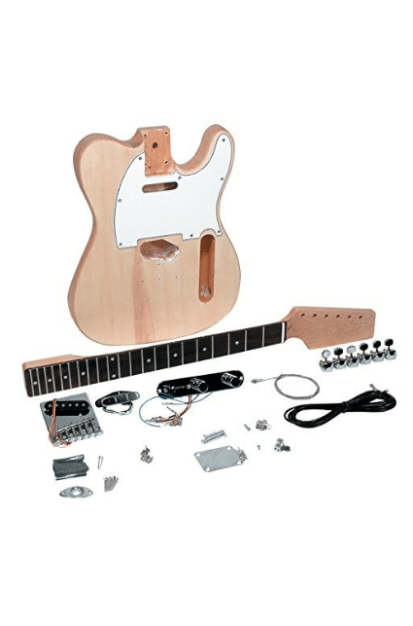
Saga TC-10
A quality Telecaster style guitar for the budget conscious shopper.
With this DIY guitar kit, you’re getting an easy to build T style instrument that requires minimal additional equipment in order to build. All electronics and hardware that you’ll need are included in the box, and the headstock is a blank, giving even more customization options.
For not a lot of money, this Tele style Saga TC-10 delivered big. With a mahogany body and maple neck, it looked good even with just a light stain for finish. The routing was all very nicely finished, too, giving the impression that some care and attention has gone into this kit.
The assembly directions were simple to follow, made simpler by the fact that the maple neck, as is correct for a Tele, was a bolt-on type. This sped up the build time significantly over the set neck models we built. We loved that the headstock had a blank shape. This meant we were able to cut it to whatever style we liked, rather than being stuck with an obvious Fender copy.
Those who are electrically challenged will also be thrilled to discover that the electronics are supplied ready for installation, which means no soldering is required!
As briefly mentioned, it had a mahogany body, but the premium materials didn’t stop there. It also happened to include a rosewood fretboard. The neck was another real highlight on this guitar, and despite the nut being plastic, it was well cut and caused no issues at all.
Tones were typical for the style, with some nice spank in the bridge position and some sweet, low output from the neck. Being mahogany bodied, it was a little warmer than you might expect if you’re used to alder, ash, or poplar, but still very ear-pleasing with nice sustain.
Verdict: For less than the price of a Bullet Series Squier, the Saga TC-10 gets you a highly playable T-style guitar with all the expected tones. The build process was among the simplest of all the guitars in this roundup, and the hardware and electronics selection was incredible when you consider the price.
- Easy build for novices
- Headstock can be customized
- No soldering required
- Heavier than expected
- Plastic nut
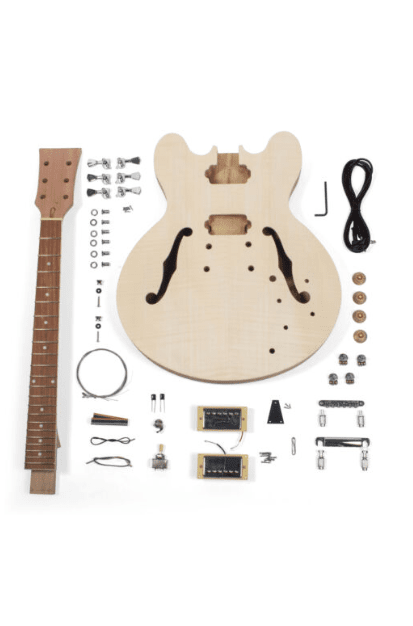
StewMac DIY 335-Style
Incredible quality and tones, and a much easier build than you might expect.
Typically a 335 style build is best left to the pros, but with this StewMac kit, even those new to DIY guitars can feel confident. In the kit you get quality woods, premium hardware, and the best part – all of the routing and center block work is pre-prepped for you.
If you’ve ever done any kind of guitar repair or lutherie, the name StewMac is probably very familiar to you. So you can definitely feel good about spending just a little more on their StewMac DIY 335-Style Kit.
Being a StewMac Kit, the instructions were superb. And of course, there were tons of videos and online resources to accompany the written directions, which took a lot of the stress out of this build.
The set mahogany neck was arrow straight and fit perfectly in the pocket. Once the glue had set, everything held firm as expected, leaving us with a great foundation to finish the project. Like the neck, the body was also mahogany, and topped with a lovely flamed maple veneer that was really eye-catching after it had been finished.
It came with pre-drilled holes for the hardware, all of which were well aligned, and the hardware itself was fantastic quality. The chrome finish was really well applied, and there was nice weight to each component. The tuners were keystone-style and worked brilliantly.
Once everything was fully assembled, it really looked fantastic. The humbuckers served up fat tones with superb clarity and tons of growl when pushed hard. Lots of people buy kit guitars with the intention of replacing the pickups right away, but these were easily equivalent to those found on the Epiphone Dot.
It was extremely comfortable to play, even for a large guitar. The neck was slim and forgiving, and the pre-prepped fretwork was all very well done, with no need for intervention during the build.
Verdict: We thought this StewMac DIY 335-Style Kit was worth every penny. The build experience was a ton of fun, and while it was a little more challenging than the T and S Style guitars we built, it was still frustration free. The end result was fantastic, and we’d gladly recommend this to anybody.
- Lovely flamed top
- Centerblock work done at the factory
- Comfortable to play
- Not suitable for novice builders
- Wiring through the F holes can be tricky

BexGears DIY V Electric Guitar Kit
A simple take on the classic flying V.
This is a great kit for players who love the idea of building a V style guitar, but who might be intimidated by taking on a build with a set neck. It offers simple bolt on construction, with a well cut body, and good quality components.
Most Flying V style guitars come with set necks, but this BexGears DIY V Electric Guitar Kit was a bolt-on type. This obviously helped to keep the cost down and, as a result, was one of the more affordable options.
Unfortunately, this kit did not come pre-packed with instructions. In fact, we had to reach out to the manufacturer who sent them in a PDF. While they were very responsive, we didn’t particularly like that we had to ask for the directions. Although, once we had the plans, the build process went pretty smoothly.
The body was made from okoume, which is a well-known mahogany substitute. It had a pretty attractive grain and no obvious joins, which was nice to see on such an inexpensive kit. The maple neck was good and straight, and fit nicely into the pocket with no wobble or play.
It had a composite rosewood fretboard, which in layman’s terms suggests it’s actually an artificial board designed to look like rosewood. We found that the fretwork was decent, with no sharps, but the crowns definitely needed some polishing.
As for electronics, like you’d expect from any good V, it came with a pair of humbuckers. They were preinstalled in the pickguard, which contributed massively to the speed of this build. Tonally, this kit did more than we asked of it considering the price. It had a decent balance, with some good warmth and richness from the neck position, and some epic lead tones from the bridge.
We found it to be an easy player, albeit with the usual ergonomics issues that come with V-shaped guitars (who plays a V sitting down anyway!?).
Verdict: The BexGears DIY V Electric Guitar is a great choice if you don’t want to commit to a lengthy build, and you’d like to have one of the more unusually-shaped guitars from history in your collection at the same time. It had some great tones, the build was smooth once we got instructions, and we found it to be a reliable player.
- Good pickups
- Simple build process
- Well hidden joins on the body
- Composite fretboard
- Bolt on neck
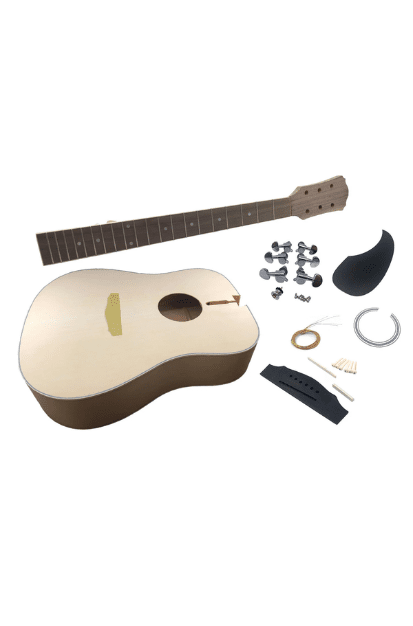
Solo ADK-10 DIY Acoustic Guitar Kit
A handsome dreadnought style acoustic with punchy tones.
If you’re more into the idea of an acoustic DIY project than an electric, this is a great kit to get started with. Most acoustic DIY kits involve steaming and bending wood, but in this set, the most difficult labor is taken care of at the factory while still leaving you plenty to do on your own.
Building an acoustic guitar is generally considered to be the most challenging DIY task for a have-a-go luthier. If you’ve always wanted to make your own and have been intimidated by the process, look no further than the Solo ADK-10 DIY Acoustic Guitar Kit.
We were pleased to see detailed instructions enclosed within the kit for this build. They very clearly showed us what we had to do, which was a big plus, since there were no online resources that we could find to help us with this particular kit.
Unlike the electric kits, we did have to set the nut into the maple neck. The slots were pre-cut, which helped a lot, but it required a fair bit of sanding as it was very tall and would have set the action much too high.
It had a spruce top, which is always nice to see on a dreadnought, and that was paired with agathis back and sides. Agathis is a very middle of the road wood. It isn’t bad, but some might find it to be a little plain tonally.
The neck was made from maple and topped with a walnut fretboard. The frets were properly finished, with no sprout or burrs that would cause any discomfort. The neck slipped into the body without any issues, but we did need to make some truss rod adjustments once it was set.
This guitar gave some great tones, which surpassed most off-the-shelf models sitting in the price range. It had a lovely complex mid range, with sparkly highs and a nice punchy bottom end. It had tons of presence, and boy was it loud.
Verdict: Anyone looking to get started in the world of acoustic guitar lutherie should definitely check out the Solo ADK-10 DIY Acoustic Guitar Kit. It wasn’t quite as simple to assemble as even the most advanced electric kits in the group, but it was definitely a rewarding build.
- Detailed instructions included
- Spruce top
- Great tones
- Nut needed to be set
- Agathis back and sides
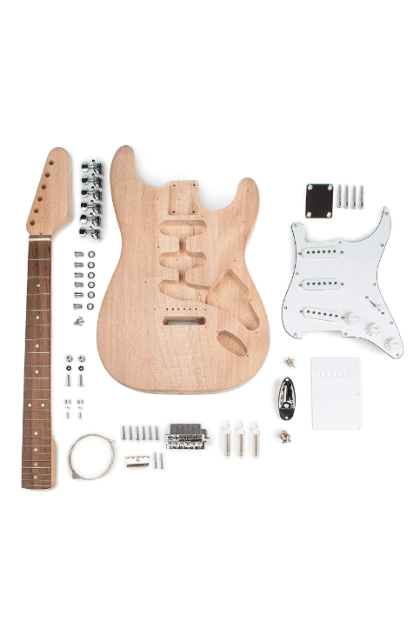
StewMac DIY S-Style Kit
A true classic that you can build at home.
This is a wonderful Strat type kit for anybody looking to build their own version of the Fender classic with parts and materials from one of the most trusted names in lutherie. The body and neck are extremely well cut, and the electronics and components are all of excellent quality.
As we found with their 335 Kit, this StewMac DIY S-Style Kit came with fantastic instructions, tons of video resources, and an army of DIY enthusiasts online who were happy to share their experiences building this guitar.
Unlike a typical Strat, it had a mahogany body and a mahogany neck. Unfortunately, this did make it much heavier than a typical Strat and it subsequently lost a little of the snappy response that experienced Strat players have come to expect. Despite this, the neck was topped with a lovely rosewood fretboard complete with well-finished frets.
The neck fit into the pocket snugly, just like we’d expected, and lined up perfectly with the bolt holes on the body. We didn’t find that any shimming was necessary, making the neck installation probably the simplest part of the whole build.
It came with a pre-loaded pickguard, meaning pretty much all of the difficult parts of the wiring and electronics work were already done for us. If you like to tinker, this might be disappointing, but if you’re new to DIY kits, this is a big plus.
One thing we did have to do was put some shielding tape in the cavities, as the interference was very strong. After we’d taken care of this, the performance was much better. We’d highly recommend picking up some of this tape when you place your order.
Once everything was together, we did enjoy playing this Strat-style guitar. We managed to get a super low action out of it, so playability was silky smooth, and the trem system worked surprisingly well. Tones from the single-coil pickups were pretty standard, offering lots of clarity when played clean, especially in the bridge position. We got quack in the 2 and 4 positions, and some nice, rounded warmth from the neck.
Verdict: This StewMac DIY S-Style Kit was easy to put together, it came with nice hardware and decent electronics, and would ultimately make a great hot rod or Partscaster if you wanted to continue to develop it. Those who like a lightweight Strat may want to look elsewhere, but otherwise it was a solid guitar with proper Strat tones and playability.
- Great low action
- Pre loaded pickguard
- Real rosewood fretboard
- Heavier than a typical Strat
- Required shielding tape
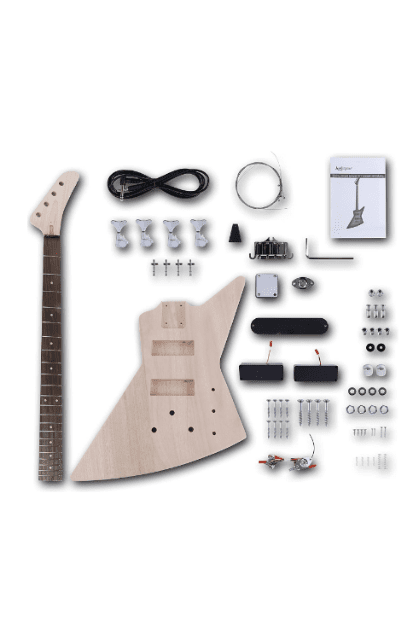
Leo Jaymz DIY Ex Kit
Now you can build your own heavy metal icon.
This is a great set for players looking for something that stands out a little from the usual kits. The body dimensions are true to the Gibson original, and it even comes with a set neck for absolute authenticity. It’s a fun kit to put together, and it rocks hard when it’s ready to play.
The Leo Jaymz DIY Ex Kit was one of the more exciting designs from all the kits in the roundup, but once again, we were disappointed to find that there were no instructions included in the box. This was saved however by the very detailed assembly instruction video on the Amazon product page.
Both the neck and body were made with mahogany, which did make it slightly heavier than a korina-bodied Gibson or Epiphone, but not excessively so. The neck was nicely carved and it fit the pocket perfectly. It had a rosewood fingerboard, which looked great and felt just as good.
This kit doesn’t come with a pickguard, which is a little disappointing. But because the body meets Gibson/Epiphone dimensions, getting an aftermarket example is inexpensive and easily found if this is something you wanted to add.
We found the tuners to be something of a weak point in this kit, so would probably recommend buying an upgraded set to install as you build. Other than that, the hardware was all pretty decent, and fit as expected.
The electronics were good, but if you’re looking for hot pickups, you might find yourself underwhelmed. They were nice and clear, but as the majority of Explorer players are likely to play heavier music styles, you’ll likely need to supplement the output with something like a Seymour Duncan Pickup Booster. Alternatively, you could just upgrade the pickups during the build.
Verdict: The Leo Jaymz DIY Ex Kit is a fantastic platform to get started with if you’re looking for a totally custom Explorer-style guitar. The neck and body were just about perfect, and despite the fact that the tuners weren’t the best, everything that came included with the kit was definitely serviceable.
- Great neck
- Excellent online resources
- Excellent mod platform
- No included pickguard
- Instructions not included
Things You Might Need to Assemble a DIY Guitar Kit
Shopping for a DIY guitar kit is in many ways like shopping for an off-the-shelf guitar. You’ll still want to understand what body style it has, what type of pickups it has, and what it’s made from among other things.
One of the most important things, of course, is to check what you actually get in the DIY kit.
While most kits make it seem like they contain everything you’ll need to build your guitar, the truth is, they’re only referring to the actual guitar components. You won’t need a full arsenal of lutherie tools, but you will still need a number of woodworking tools, as well as supplies for your guitar’s finish. Below we’ve listed the bare minimum.
Flathead & Phillips Head Screwdrivers
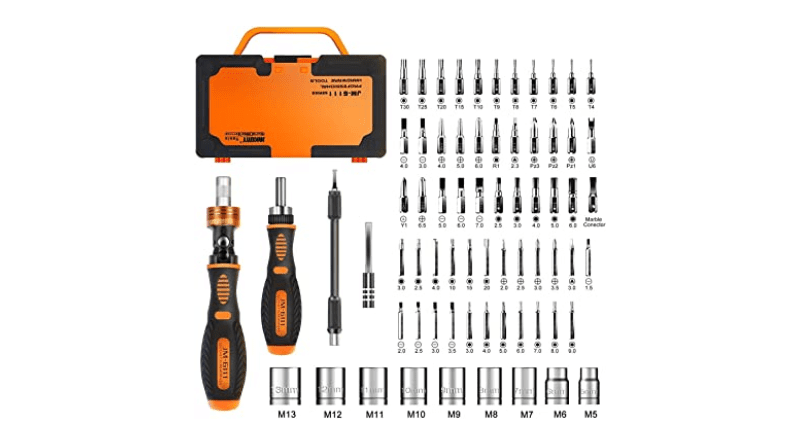
We highly recommend using hand tools when it comes to installing screws in your kit. Using an impact driver or other power screwdrivers can very easily result in stripping screw heads, or just as bad, over-tightening them. An assortment of quality screwdrivers will make life easier while building your guitar.
Allen Wrench Set (metric/imperial)
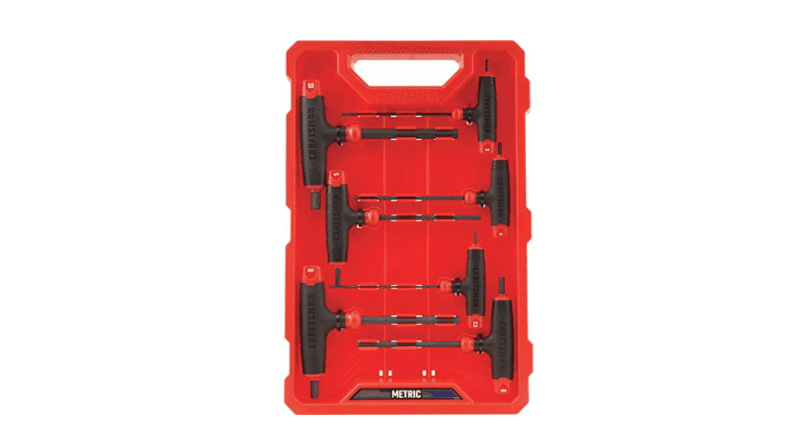
Some kits do come with an Allen wrench included, but these included wrenches are often low-quality and prone to slipping. In addition, they usually don’t have proper handles, and can be very uncomfortable for extended use.
Drill
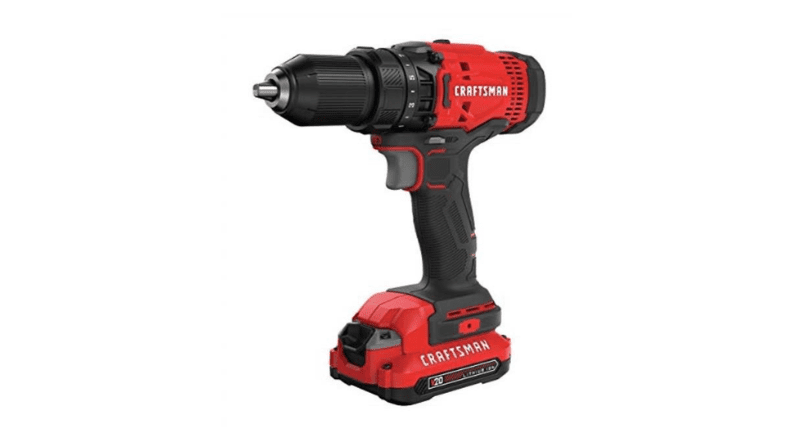
If your kit requires that you make your own screw holes, you’re going to need a drill. A good cordless drill will allow you to perform these tasks even if there aren’t any available outlets near your work bench.
Drill Bits
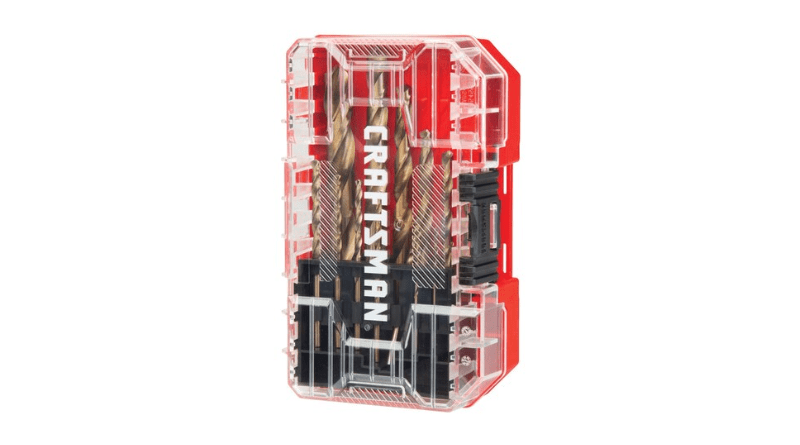
Having a range of drill-bit sizes will ensure that no matter what gauge holes you need to drill, you’re fully prepped.
Hammer

A deadblow hammer, often used as a fretting tool, is a great investment to help set pieces into tight slots. They allow you to hammer components in, without causing the type of shock that would cause damage to the guitar. This is particularly useful if you’re building a guitar with a set neck and/or Tune-o-matic bridge.
Quality Wood Glue
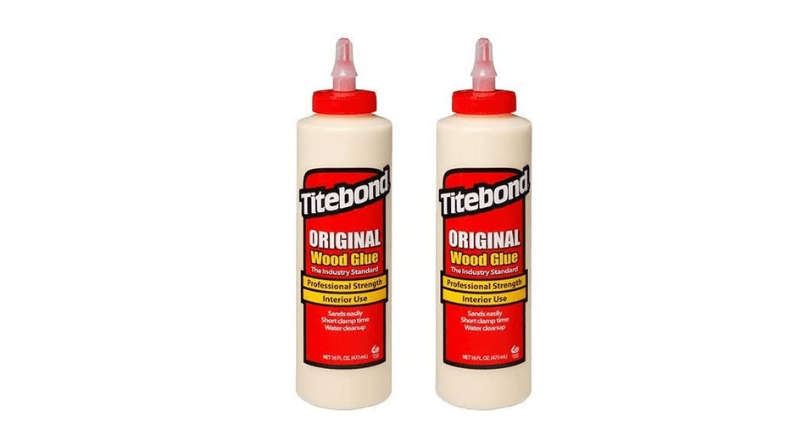
No matter which type of guitar you plan to build, you’ll inevitably need to use wood glue at some point. Titebond is without a doubt the best wood glue on the market for lutherie, and is the only type we’d ever recommend.
C-Clamp(s)
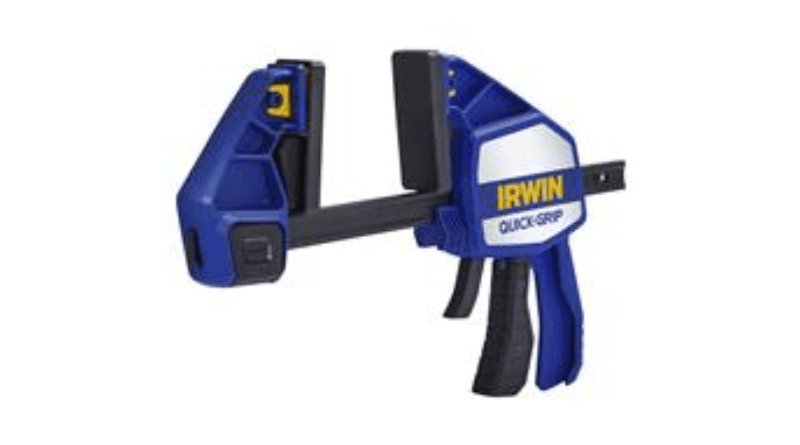
If your kit uses a set neck, you’ll need at least 1 C-clamp to hold the neck in position while the glue cures.
Wood Filler
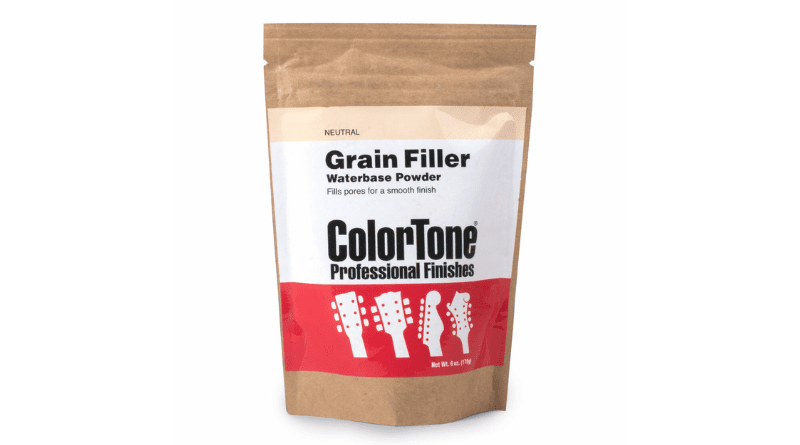
Depending on the wood type of your guitar kit, you may need to fill in any gaps caused by defects in the wood grain. There are specialist lutherie wood fillers available, and they are always recommended above regular hardware-store types.
Tung Oil
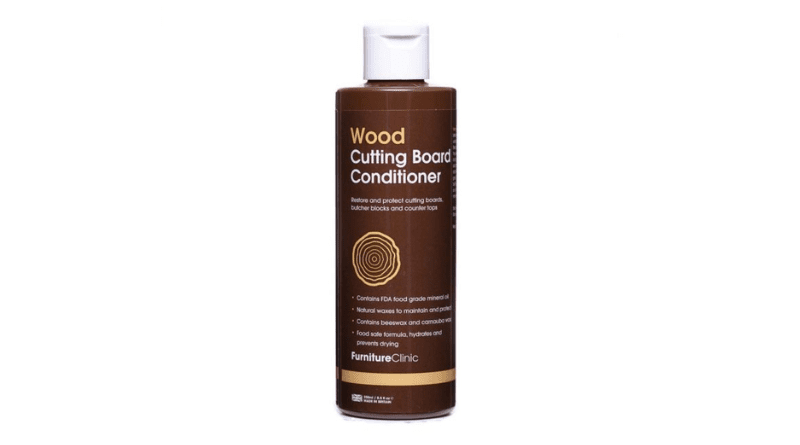
Most guitar kits will have completely unfinished wood, and this includes the fretboard. As fretboards shouldn’t be finished with paint or clearcoat, it’s highly recommended that you use tung oil to protect it and make the grain pop aesthetically.
Blue Painter’s Tape
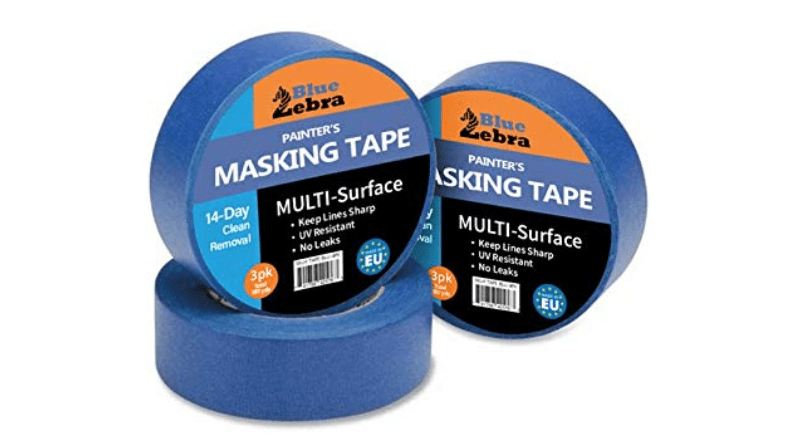
Painter’s tape is a must for protecting areas that you want to leave intact when sanding or applying finishes.
Sand Sponges
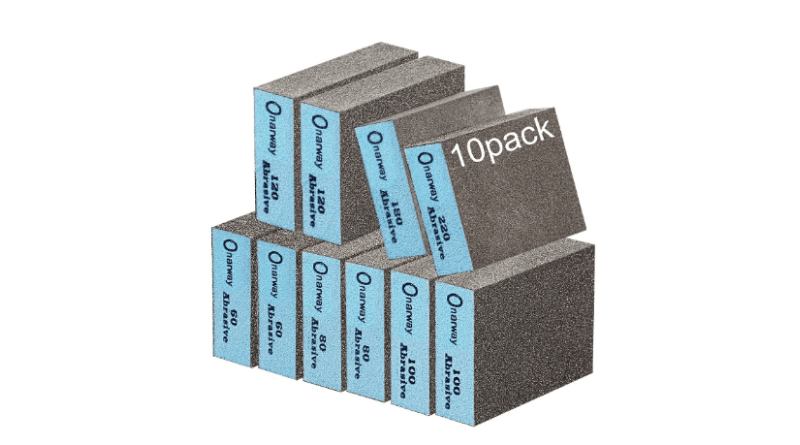
A range of sanding sponges covering different grits will be essential for tidying up areas around the routs and pockets, as well as around any new holes you may need to drill. Sanding sponges will give a better result than sandpaper and a block.
Soldering Iron, Solder, and Flux
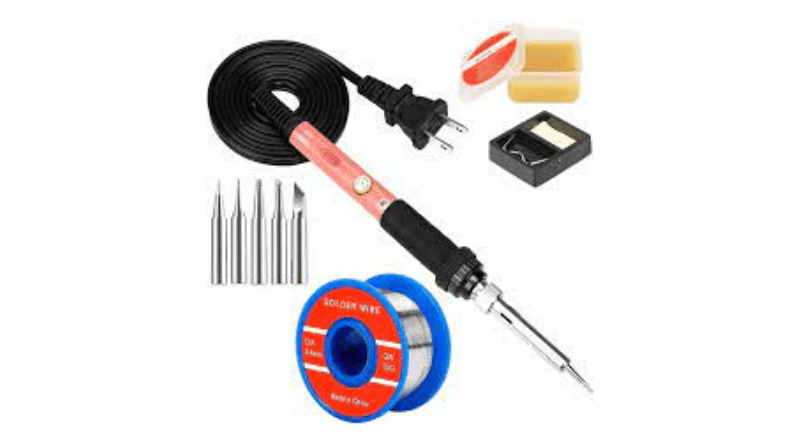
Most of the kits we recommended in this roundup come with pre-wired electronics for your convenience. However, if you decide you’d rather use different pickups, or different pots, you will need a soldering kit.
Paint/Stain & Clearcoat
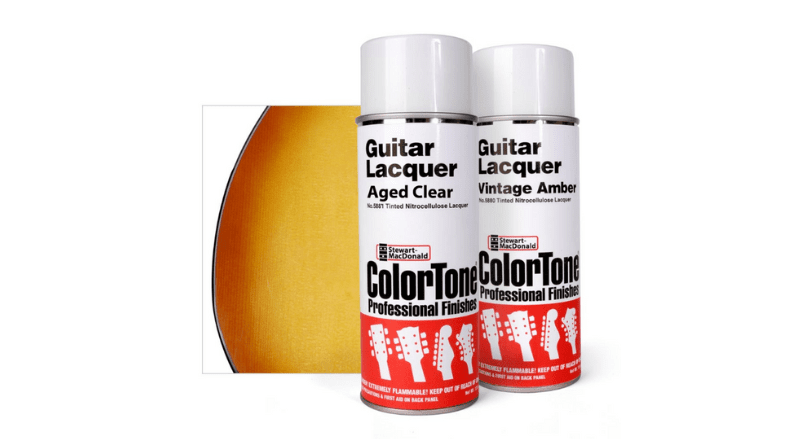
The most obvious element missing from most kits is the finish supplies. For a pro-looking finish, we always recommend using spray-based lacquers. Remember that depending on the type you chose, the curing time could take weeks to months. For more on finishing a guitar, check out our guide to refinishing guitars.
Final Thoughts
There is a ton of variety on the market today, so no matter which style of guitar you like, there’s almost certainly a kit you can build. As long as you’re pre-prepped with the tools listed above, your project should go very smoothly.
To recap, our Top Pick was the Bad Cat Instruments LP Style Kit, which hit a great middle ground between price and performance. Our Best Value pick, the Saga TC-10 delivered solid quality at a fantastic price. Finally, our Editor’s Choice was the StewMac DIY 335-Style Kit, which offered a straightforward build and excellent performance once assembled.

